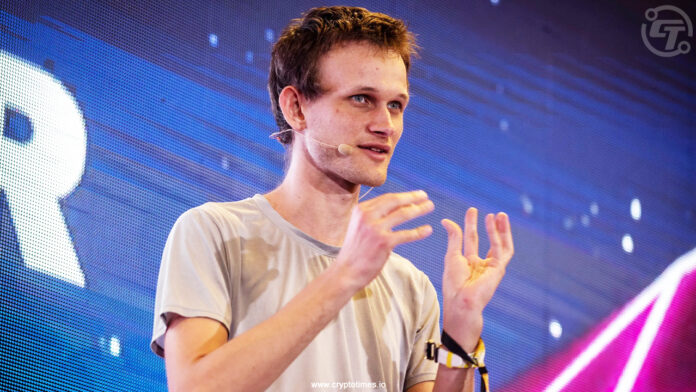Ethereum co-founder and developer, Vitalik Buterin,, has shared valuable insights into the future of Ethereum. While being the central character for the Ethereum ecosystem, Vitalik has addressed key-developments, challenges, and their path for implementations ahead for the Ethereum network.
In a latest blogpost on October 14th, Vitalik starts by acknowledging the importance of the Merge upgrade and Ethereum’s transition to proof-of-stake (PoS) network. system has demonstrated remarkable stability and performance, effectively addressing many centralization concerns. However, Buterin notes that significant challenges remain unhinged, particularly regarding transaction finality and accessibility for smaller validators.
“Today, Ethereum has been a stably running proof of stake system for almost exactly two years, and this proof of stake has performed remarkably well in stability, performance and avoiding centralization risks.” Buterin said, adding “However, there still remain some important areas in which proof of stake needs to improve.”
In his roadmap from 2023, he categorized these issues into two primary buckets: technical improvements and economic adjustments. He believes that the technical improvements are taken for accounting in the Merge upgrade and economical aspects are to become a part of upcoming Scourge upgrade.
Below are the key-points on which Vitalik has put the spotlight in this latest sharing.
Technical Enhancements: The Path Forward
Buterin highlighted the current limitation in block finalization, which requires 2-3 epochs, or approximately 15 minutes, to confirm a block. Additionally, the requirement for a minimum stake of 32 ETH poses a barrier to many potential validators. These constraints conflict with the goals of maximizing validator participation, minimizing finalization time, and reducing node overhead.
To address these issues, Buterin proposed several solutions aimed at achieving single-slot finality – where blocks can be finalized in one slot (ideally within 12 seconds) and reducing the minimum stake to 1 ETH. This would not only enhance user experience but also democratize staking, making it more accessible to solo validators.
Proposed Solutions for Single-Slot Finality
Buterin outlined three potential paths for achieving single-slot finality:
Brute Force Approach: Implement advanced signature aggregation protocols, potentially utilizing zero-knowledge proofs (ZK-SNARKs) to process signatures from millions of validators quickly.
Orbit Committees: Introduce a new mechanism that allows randomly selected medium-sized committees to finalize the chain while maintaining economic finality. This approach would leverage the existing heterogeneity in validator deposit sizes, ensuring that smaller validators still play a crucial role in the network’s security.
Two-Tiered Staking: Establish two classes of stakers with different deposit requirements. Only higher-deposit stakers would directly contribute to economic finality, while lower-tier stakers could delegate their stake or provide attestation.
The Need for Secrecy in Block Proposals
Another challenge facing Ethereum is the predictability of block proposers, which poses security vulnerabilities. An attacker can target validators based on their known IP addresses at the moment of block proposal. Buterin emphasized the importance of implementing Single Secret Leader Election (SSLE) protocols to obscure the identity of the next block proposer until the moment the block is created.
Future Directions
Buterin referenced several research initiatives aimed at addressing these issues, including the “Whisk” protocol and various proposals on SSLE. He expressed the need for a balance between simplicity and functionality in the protocol, as the introduction of complex cryptographic solutions could increase the risk of security vulnerabilities.
As Ethereum continues to evolve, Buterin remains optimistic about the platform’s potential to improve its proof of stake system. By addressing these technical and economic challenges, Ethereum aims to enhance user experience, improve security, and maintain its position as a leader in the blockchain space.
Also Read: Vitalik Buterin Praises Ethereum Devs’ Cooperation Efforts



